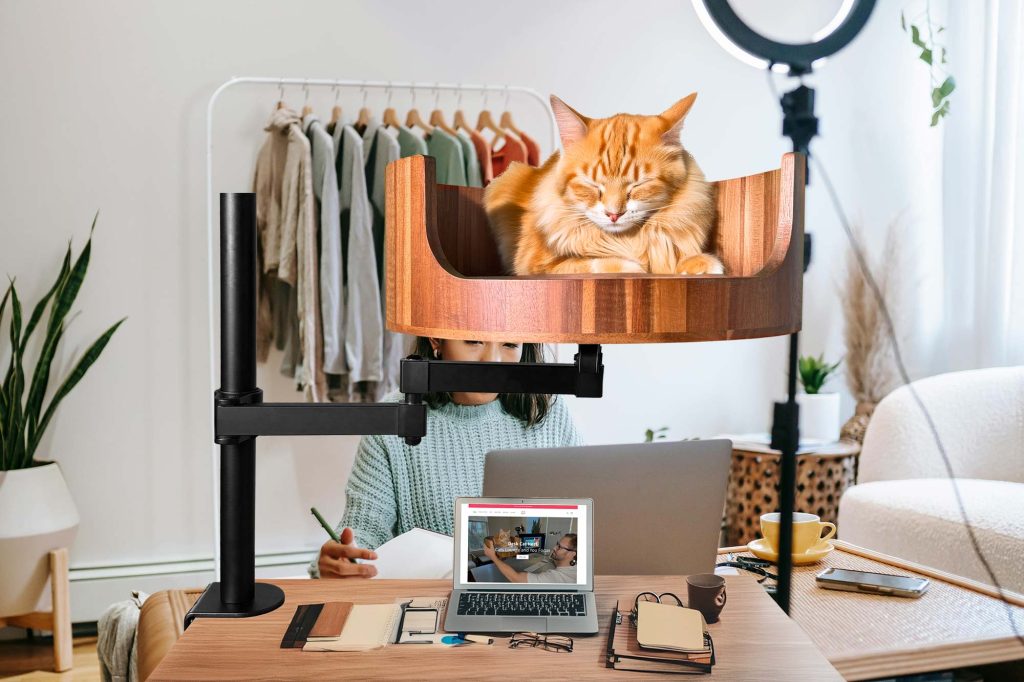Cats are known for their variety of vocalizations, from gentle purring to loud yowling. Understanding your feline friend’s vocalizations can provide insight into their needs, emotions, and overall well-being. In this article, we will explore the phenomenon of cat yowling and what it may signify about your cat’s behavior.
Cat yowling can be a distressing sound for many pet owners, but it is important to recognize that this vocalization serves a purpose for our feline companions. Yowling is often used by cats to communicate their needs, whether it be hunger, loneliness, or discomfort. By understanding the context in which your cat is yowling, you can better address their needs and provide them with the care and attention they require. We will delve into the various reasons why cats yowl, how to decipher the different types of yowls, and how to respond appropriately to your cat’s vocalizations.
1. Cats yowl for various reasons such as seeking attention, expressing discomfort, or feeling unwell.
2. Understanding your cat’s body language and context can help decipher the meaning behind their yowling.
3. Yowling could indicate stress or anxiety, so creating a calm environment and providing enrichment can help alleviate these issues.
4. Excessive yowling may be a sign of an underlying health problem, warranting a visit to the vet for evaluation.
5. Responding appropriately to your cat’s vocalizations can strengthen the bond between you and your feline companion.
Causes of Cat Yowling
Cat yowling can be triggered by a variety of factors. One common reason for this vocalization is mating behavior. Female cats in heat often yowl loudly to attract male cats. Another cause of cat yowling is attention-seeking behavior. Cats may yowl to get their owner’s attention, especially if they are hungry or want to play. Medical issues such as pain or discomfort can also lead to excessive yowling in cats. In some cases, older cats may develop cognitive dysfunction syndrome, which can cause them to yowl more frequently.
How to Stop Cat Yowling
To address cat yowling, it is important to first identify the underlying cause. For cats in heat, spaying or neutering can help reduce yowling behavior. Providing enough mental and physical stimulation through playtime and interactive toys can help decrease attention-seeking yowling. Regular veterinary checkups are crucial to identify and treat any medical issues that may be causing the yowling. For older cats with cognitive dysfunction syndrome, providing a comfortable and familiar environment can help reduce stress and yowling behavior.
Training Tips for Managing Cat Yowling
Training can be an effective way to address cat yowling behavior. Positive reinforcement techniques such as rewarding quiet behavior and ignoring yowling can help teach cats that yowling is not the most effective way to communicate. Providing distractions such as puzzle feeders or treat-dispensing toys can help redirect your cat’s attention and energy. It is important to be consistent in your training approach and to avoid reinforcing yowling behavior unintentionally.
When to Seek Professional Help
If your cat’s yowling behavior persists despite trying various strategies, it may be time to seek help from a professional. A veterinarian can help rule out any medical issues that may be contributing to the yowling. A certified animal behaviorist can also provide expert guidance on how to modify your cat’s behavior through training and environmental enrichment. Remember that patience and consistency are key when addressing cat yowling, and seeking professional help can make a significant difference in managing this vocalization.
## FAQ
### What causes cat yowling?
Cat yowling can be caused by a variety of factors, such as hunger, stress, boredom, attention-seeking behavior, or medical issues. It is essential to observe your cat’s behavior and consult with a veterinarian to determine the underlying cause of the yowling.
### How can a Desk Cat Nest help with cat yowling?
A Desk Cat Nest provides a cozy and secure space for your cat to relax and retreat to. By offering your cat a designated area to rest and feel safe, a Desk Cat Nest can help reduce stress and anxiety that may be contributing to your cat’s yowling behavior.
### Is a Desk Cat Nest suitable for all cats?
While most cats enjoy having a cozy space to nap and observe their surroundings, individual preferences may vary. Some cats may prefer open spaces or elevated perches instead. It is essential to introduce the Desk Cat Nest to your cat gradually and observe their behavior to see if they enjoy using it.
### How should I introduce a Desk Cat Nest to my cat?
When introducing a Desk Cat Nest to your cat, place it in a quiet and comfortable area where your cat likes to spend time. Encourage your cat to explore the nest by placing treats or toys inside. Gradually familiarize your cat with the nest by allowing them to investigate it at their own pace.
### Can a Desk Cat Nest completely eliminate cat yowling?
While a Desk Cat Nest can help provide a calming environment for your cat and reduce stress-related yowling, it may not completely eliminate the behavior. It is essential to address any underlying issues causing the yowling and provide proper care and attention to your cat’s needs.
In conclusion, Desk Cat Bed is a valuable choice for addressing cat yowling as it provides a cozy and secure space for your feline friend to rest and relax. By offering a designated spot for your cat to retreat to, you can help reduce stress and anxiety, which are common triggers for excessive vocalization. Additionally, the elevated design of the Desk Cat Bed allows your cat to feel safe and in control of their surroundings, further promoting a sense of security and comfort. With its plush cushioning and sturdy construction, Desk Cat Bed is a durable and practical solution for helping your cat feel content and contented, ultimately leading to a quieter and more peaceful home environment.


